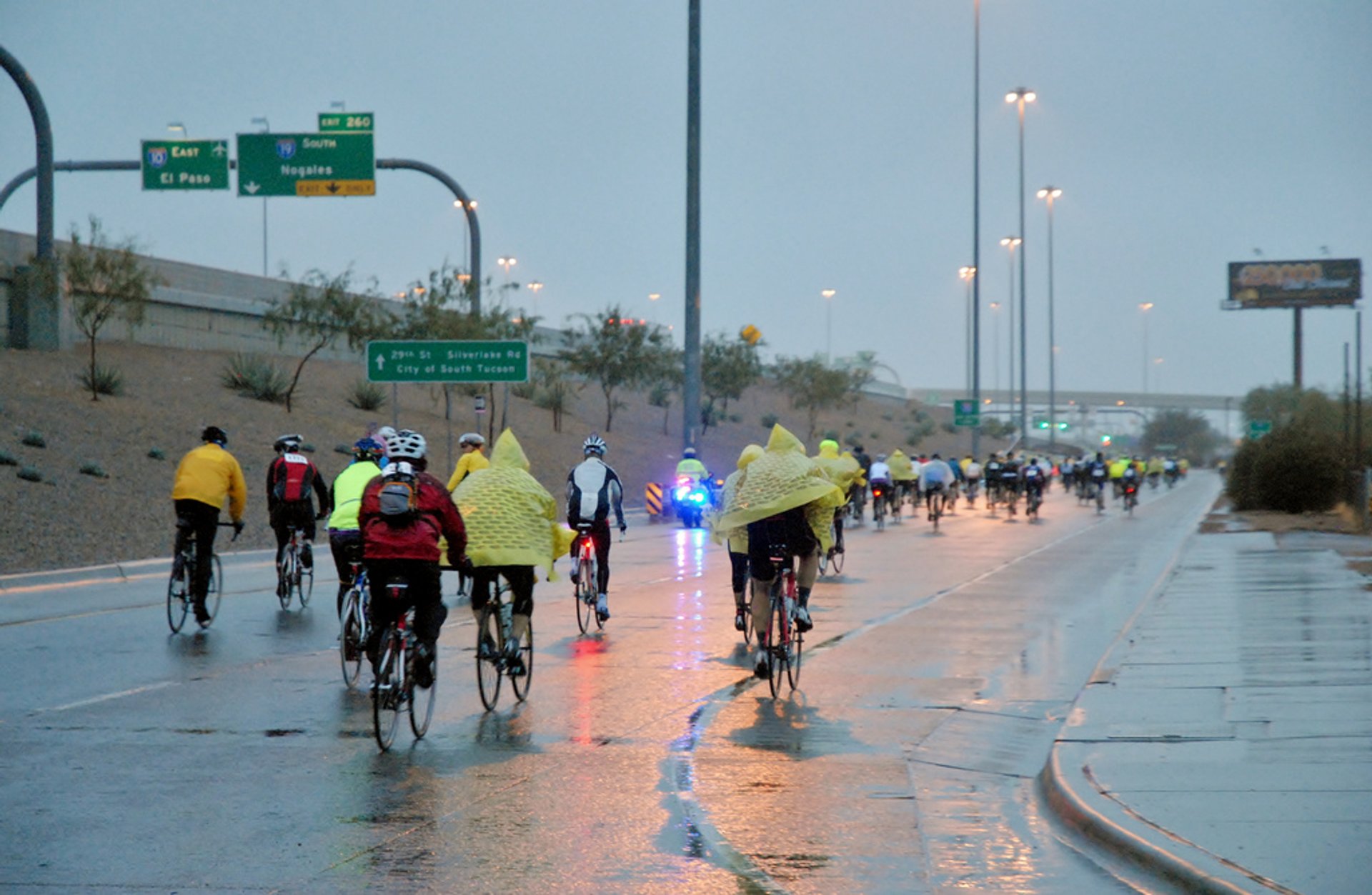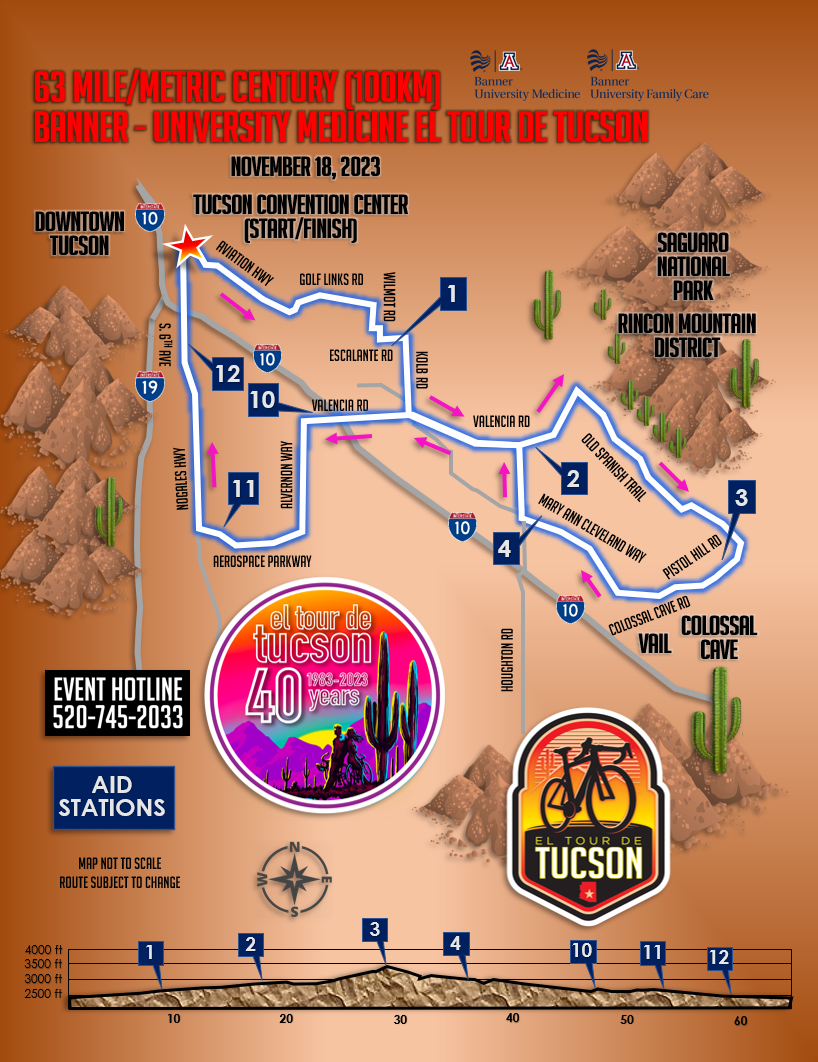Tour De Tucson: An Epic Cycling Adventure Through Arizona's Spectacular Landscape
Every year, thousands of cycling enthusiasts from around the world gather in Tucson, Arizona, for the renowned Tour de Tucson. This event has become a celebrated tradition that showcases the breathtaking beauty of the Sonoran Desert while offering participants an exhilarating cycling experience. Whether you're a seasoned cyclist or a casual rider, this event promises unforgettable memories and a chance to connect with fellow biking enthusiasts.
As one of the largest timed cycling events in the United States, Tour de Tucson continues to grow in popularity. The event attracts both professional athletes and recreational cyclists who are eager to explore the stunning desert terrain and enjoy the camaraderie of like-minded individuals. With multiple routes available, there's something for everyone, from short family-friendly rides to challenging long-distance courses.
This article dives deep into everything you need to know about Tour de Tucson, including its history, race routes, tips for participants, and why it's considered one of the premier cycling events in the country. Whether you're planning to join the event or simply want to learn more about this iconic cycling festival, you're in the right place.
Read also:Rollie Baddies Age Unveiling The Life And Journey Of A Rising Star
Table of Contents
- History of Tour de Tucson
- Tour de Tucson Routes
- Preparation Tips for Participants
- Safety Measures During the Event
- Benefits of Participating in Tour de Tucson
- Community Involvement and Impact
- Environmental Considerations
- Nutrition and Hydration Tips
- Essential Equipment for Cyclists
- Future Plans for Tour de Tucson
History of Tour de Tucson
Established in 1994, the Tour de Tucson has evolved into one of the most prestigious cycling events in the United States. Initially conceived as a way to promote cycling and tourism in the Tucson area, the event quickly gained traction and attracted participants from across the globe. Over the years, it has grown in scale and popularity, drawing thousands of cyclists annually.
The event's success can be attributed to its unique combination of challenging terrain, stunning natural scenery, and a welcoming community spirit. The organizers have consistently worked to improve the experience for participants, adding new routes, enhancing safety measures, and fostering a sense of community among cyclists.
Key Milestones in Tour de Tucson's History
- 1994: The first Tour de Tucson takes place, attracting hundreds of participants.
- 2000: The event expands to include multiple routes, catering to cyclists of all levels.
- 2010: Tour de Tucson becomes an officially sanctioned USA Cycling event, increasing its prestige.
- 2020: Despite the challenges posed by the pandemic, the event adapts by offering virtual participation options.
Tour de Tucson Routes
One of the highlights of Tour de Tucson is the variety of routes available to participants. Whether you're a beginner or an experienced cyclist, there's a route that suits your skill level and preferences. The event offers several options, ranging from short, family-friendly rides to long-distance challenges that test even the most seasoned riders.
Route Options
- Family Ride: A 10-mile loop designed for families and casual cyclists, featuring flat terrain and minimal elevation gain.
- Half Metric Century: A 32-mile route that introduces participants to the beauty of the Sonoran Desert, with moderate elevation changes.
- Full Metric Century: A 62-mile challenge that takes cyclists through picturesque desert landscapes and offers a more demanding elevation profile.
- Full Century: The ultimate test for experienced cyclists, this 100-mile route includes significant elevation gains and breathtaking views.
Preparation Tips for Participants
Proper preparation is key to enjoying a successful and safe Tour de Tucson experience. Whether you're a first-time participant or a seasoned veteran, these tips will help you get ready for the event:
- Train consistently in the weeks leading up to the event, focusing on endurance and strength.
- Familiarize yourself with the route and elevation profile to better plan your strategy.
- Invest in quality cycling gear, including a helmet, gloves, and moisture-wicking clothing.
- Practice proper hydration and nutrition techniques to ensure you stay energized throughout the ride.
Safety Measures During the Event
Safety is a top priority for the organizers of Tour de Tucson. Several measures are in place to ensure participants have a secure and enjoyable experience:
- Volunteers and medical staff are stationed along the routes to provide assistance if needed.
- All participants are required to follow traffic laws and ride responsibly.
- Road closures and detours are implemented to minimize conflicts with motor vehicle traffic.
- Participants are encouraged to wear high-visibility clothing and use lights if riding during low-light conditions.
Benefits of Participating in Tour de Tucson
Participating in Tour de Tucson offers numerous benefits beyond the thrill of the ride:
Read also:Vittoria Lazzari Etagrave A Comprehensive Look At The Life And Career Of Vittoria Lazzari
- Physical Fitness: Cycling is an excellent cardiovascular workout that improves endurance and overall health.
- Mental Well-being: The event provides a chance to connect with nature and enjoy the mental clarity that comes with outdoor exercise.
- Community Engagement: Tour de Tucson fosters a sense of community among participants, creating lasting friendships and shared experiences.
- Supporting Local Economy: By participating, you contribute to the local economy and help sustain the event for future generations.
Community Involvement and Impact
Tour de Tucson is more than just a cycling event; it's a celebration of community spirit and collaboration. Local businesses, volunteers, and residents come together to make the event a success. The proceeds from the event support various charitable causes, including youth cycling programs and environmental conservation efforts.
The event also serves as a platform to promote cycling as a sustainable mode of transportation and encourage more people to adopt an active lifestyle. By participating, you become part of a larger movement to create a healthier, more sustainable community.
Environmental Considerations
As an outdoor event, Tour de Tucson places a strong emphasis on environmental responsibility. Organizers work diligently to minimize the event's ecological footprint by implementing sustainable practices:
- Promoting the use of reusable water bottles and hydration stations to reduce plastic waste.
- Encouraging carpooling and the use of public transportation to reduce emissions.
- Partnering with local conservation groups to restore and protect natural habitats.
Nutrition and Hydration Tips
Proper nutrition and hydration are essential for a successful Tour de Tucson experience. Cyclists should plan their fueling strategy carefully to ensure they have the energy needed to complete their chosen route:
- Consume a balanced meal rich in carbohydrates, protein, and healthy fats the night before the event.
- Stay hydrated by drinking water and electrolyte-rich beverages during the ride.
- Bring energy gels or snacks to consume during longer rides to maintain energy levels.
Essential Equipment for Cyclists
Having the right equipment can make a significant difference in your Tour de Tucson experience. Here's a checklist of essential items:
- A well-maintained bicycle suitable for the terrain you'll be riding.
- A comfortable helmet that fits securely.
- Moisture-wicking clothing to keep you dry and comfortable.
- Protective eyewear and sunscreen to shield against the Arizona sun.
Future Plans for Tour de Tucson
Looking ahead, the organizers of Tour de Tucson have ambitious plans to expand and enhance the event. They aim to increase participation numbers, introduce new routes, and incorporate more technology to improve the overall experience. Additionally, efforts are underway to strengthen partnerships with local businesses and charitable organizations, ensuring the event's continued growth and impact.
With a focus on sustainability, community engagement, and innovation, Tour de Tucson is poised to remain a premier cycling event for years to come. Whether you're a participant or a spectator, there's something for everyone to enjoy at this iconic celebration of cycling and community spirit.
Conclusion
Tour de Tucson offers an unparalleled cycling experience that combines breathtaking natural beauty, challenging terrain, and a vibrant sense of community. From its humble beginnings in 1994 to its current status as one of the largest cycling events in the United States, the event has consistently delivered unforgettable experiences for participants and spectators alike.
By preparing adequately, following safety guidelines, and embracing the community spirit, you can make the most of your Tour de Tucson experience. We encourage you to share your thoughts and experiences in the comments below, and don't forget to explore other articles on our site for more insights into the world of cycling and outdoor adventure.


